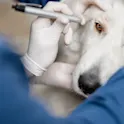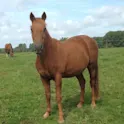Researchers challenge claim of historic human brain ‘shrinking’ and 3 other papers you don’t want to miss
By Colm Gorey and Mischa Dijkstra, Frontiers science writers Image: Shutterstock.com At Frontiers, we bring some of the world’s best research to a global audience. But with tens of thousands of articles published each year, many often fly under the radar. Here are just five amazing papers you may have missed. Researchers challenge idea that human brains shrank 3,000 years ago Last year, an article published to Frontiers in Ecology and Evolution made headlines across the world after it claimed human brains shrank in size approximately 3,000 years ago. This, according to the authors, may have driven by the externalization of knowledge in human societies, thus needing less energy to store a lot of information as individuals. As a result, we developed smaller brains. However, in a recent article, also published to Frontiers in Ecology and Evolution, another team of researchers challenged this notion, questioning several of the original paper’s key hypotheses. Speaking to his university, the University of Nevada, Las Vegas, anthropologist Brian Vilmoare said that “human brain size has not changed in 30,000 years, and probably not in 300,000 years”. In fact, he added, “based on this dataset, we can identify no reduction in brain size in modern […]














